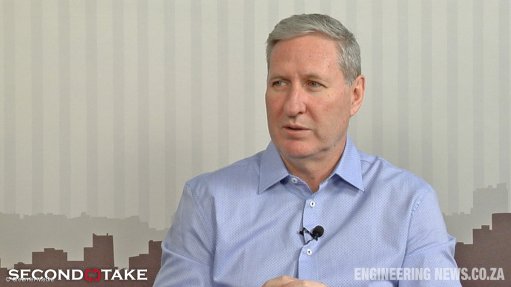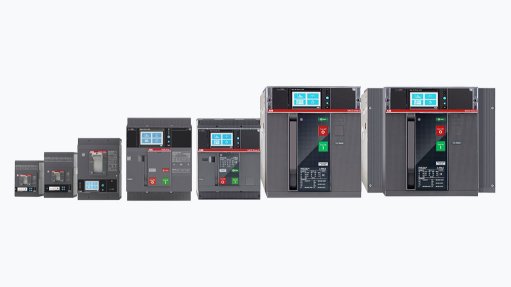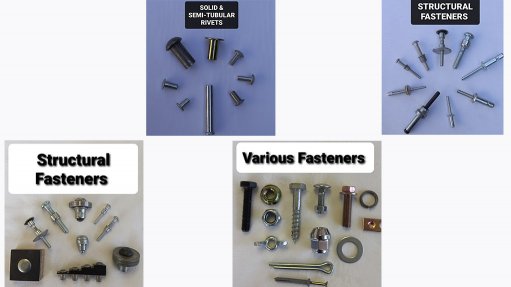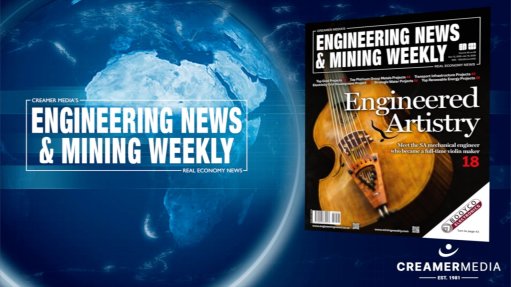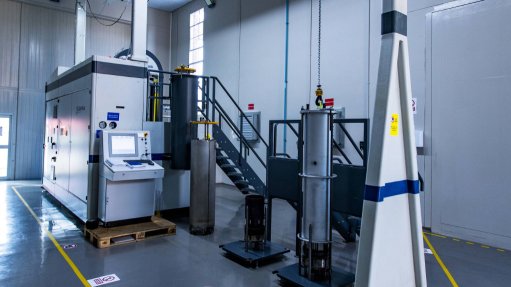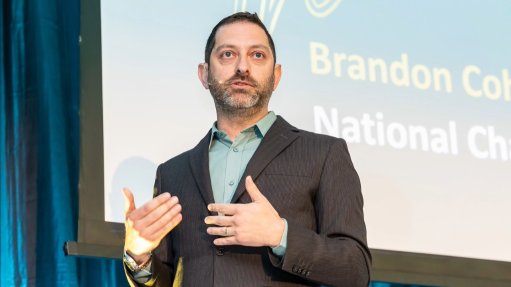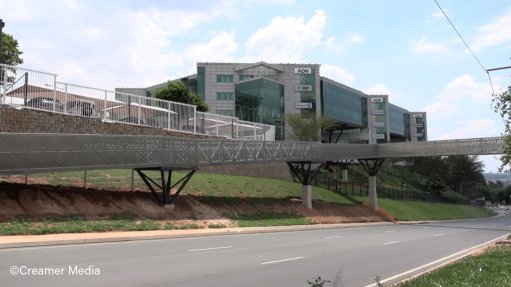Broader steel sector can withstand individual setbacks


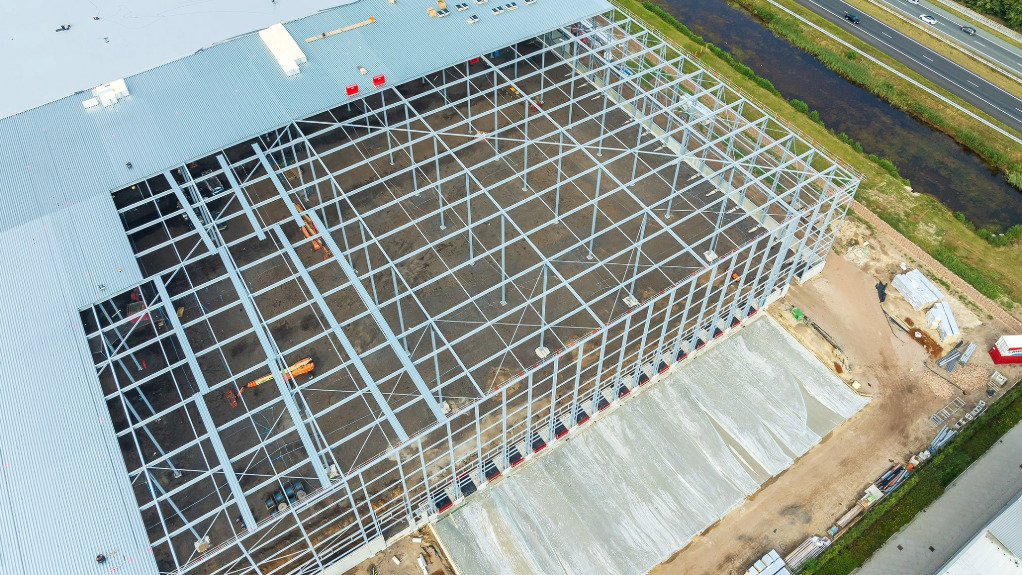
Southern African Institute of Steel Construction CEO Amanuel Gebremeskel discusses key treads in the steel construction industry
AMANUEL GEBREMESKEL South Africa’s fabrication, engineering and construction sectors have proven to be resilient, even when companies face setbacks
OPPORTUNITIES In the private-sector, the steel construction sector's projects include warehouse construction, driven by South Africa’s role as a logistics hub
While steel company ArcelorMittal South Africa (AMSA) is facing ongoing challenges, the downstream steel industry continues to function, and it is anticipated that it will continue to thrive, says industry institute Southern African Institute of Steel Construction (SAISC) CEO Amanuel Gebremeskel.
AMSA’s challenges include high energy costs, unreliable power supply, transport inefficiencies and Asian import competition, as well as domestic scrap metal export restrictions, he adds.
Consequently, the company’s long-products division in Newcastle, KwaZulu-Natal, is struggling to remain competitive against international and local suppliers. To alleviate some of the pressure, it has proposed tariffs on imports and changes to scrap metal policies.
Acknowledging that AMSA’s plant closure has dominated steel industry news, Gebremeskel adds that the broader steel industry, particularly the steel construction sector, can overcome such a crisis.
“We are careful not to get involved in those types of disputes. We might have our own opinions, but we try to stay very technical with a focus on how to make all South African structural steel industries competitive, relative to the rest of the world.”
He explains that South Africa’s fabrication, engineering and construction sectors employ a significant number of people and have proven to be resilient, even when companies face setbacks.
Projects can still be delivered effectively, whether the steel is sourced locally or internationally, Gebremeskel stresses, highlighting the industry’s ability to operate and grow despite “isolated disruptions”.
“We would prefer that the steel come from South Africa, from AMSA and other mills, but we don’t believe that the rest of the industry should be held captive to the needs of only a few members of our industry.”
He cautions against the narrative suggesting that the challenges of one company signal a crisis for the entire industry, arguing that South Africa’s steel value chain is diverse, with advanced engineering capabilities, skilled fabricators and strong logistical expertise.
“We want everyone to succeed, but we also want the industry to succeed despite challenges that some companies may have.”
Opportunities
Gebremeskel acknowledges that the steel sector “is not at its strongest”, especially when compared to periods of major infrastructure investment about 15 years ago.
However, several public and private projects are keeping many companies active.
In the public sector, projects include large steel bridge construction in the Eastern Cape, such as the Msikaba bridge, which is set to become the longest cable-stayed bridge on the continent, as well as renewable-energy projects.
Private-sector projects include warehouse construction, driven by South Africa’s role as a logistics hub, as well as projects in the mining industry.
Gebremeskel notes a significant shift in the steel construction industry. Several mini mills that recycle scrap metal, sourced from items such as household appliances and automotive parts, have expanded to a scale where they are producing substantial volumes of steel for construction projects.
Further, he highlights growing demand for light-steel-frame (LSF) buildings. Introduced in South Africa by SAISC about 15 years ago, LSF construction has become a mainstream construction method.
Such construction offers speed and efficiency, particularly compared to traditional brick and mortar, with the finished result being visually appealing and, in some cases, indistinguishable from conventional construction, says Gebremeskel.
Public entities, including the KwaZulu-Natal Department of Health, have used this construction method to complete office headquarters within strict timelines, while schools and other government facilities have also adopted it.
In Southern Africa, LSF construction falls under modular construction, where large components are manufactured off site in controlled environments and assembled on site.
This reduces delays caused by inclement weather, improves safety, minimises waste and avoids logistical challenges associated with traditional building methods.
“It’s a completely different way of building, where you get rid of many of the risks and hassles of construction.”
Highlighting its durability, Gebremeskel adds that LSF construction has a proven international record and is used in a growing number of successful long-term projects in South Africa.
The steel used is typically galvanised, providing strong resistance to corrosion and, once clad, it is protected from moisture. The structures comply with national energy efficiency regulations, often outperforming traditional brick construction in terms of insulation standards.
Further, light steel trusses have replaced wood in many roofing applications, owing to their resilience, reduced maintenance requirements and performance in coastal or humid environments.
However, Gebremeskel notes that the simplicity of light steel framing can sometimes lead to unqualified contractors attempting projects without sufficient training. While the basic assembly is relatively straightforward and easy, proper finishing, such as correct cladding installation to prevent water ingress, requires technical expertise.
He elaborates that failures, owing to incorrect assembling and finishing, have led to isolated cases of substandard performance.
SAISC works to mitigate these incidences through education, training programmes and membership requirements that enforce quality standards, he concludes.
Article Enquiry
Email Article
Save Article
Feedback
To advertise email advertising@creamermedia.co.za or click here
Comments
Announcements
What's On
Subscribe to improve your user experience...
Option 1 (equivalent of R125 a month):
Receive a weekly copy of Creamer Media's Engineering News & Mining Weekly magazine
(print copy for those in South Africa and e-magazine for those outside of South Africa)
Receive daily email newsletters
Access to full search results
Access archive of magazine back copies
Access to Projects in Progress
Access to ONE Research Report of your choice in PDF format
Option 2 (equivalent of R375 a month):
All benefits from Option 1
PLUS
Access to Creamer Media's Research Channel Africa for ALL Research Reports, in PDF format, on various industrial and mining sectors
including Electricity; Water; Energy Transition; Hydrogen; Roads, Rail and Ports; Coal; Gold; Platinum; Battery Metals; etc.
Already a subscriber?
Forgotten your password?
Receive weekly copy of Creamer Media's Engineering News & Mining Weekly magazine (print copy for those in South Africa and e-magazine for those outside of South Africa)
➕
Recieve daily email newsletters
➕
Access to full search results
➕
Access archive of magazine back copies
➕
Access to Projects in Progress
➕
Access to ONE Research Report of your choice in PDF format
RESEARCH CHANNEL AFRICA
R4500 (equivalent of R375 a month)
SUBSCRIBEAll benefits from Option 1
➕
Access to Creamer Media's Research Channel Africa for ALL Research Reports on various industrial and mining sectors, in PDF format, including on:
Electricity
➕
Water
➕
Energy Transition
➕
Hydrogen
➕
Roads, Rail and Ports
➕
Coal
➕
Gold
➕
Platinum
➕
Battery Metals
➕
etc.
Receive all benefits from Option 1 or Option 2 delivered to numerous people at your company
➕
Multiple User names and Passwords for simultaneous log-ins
➕
Intranet integration access to all in your organisation










